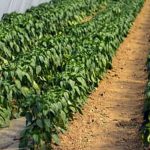Fruit trees and vegetable gardens are not only a source of fresh, organic produce but also have numerous benefits for the environment and your overall well-being. Whether you are a seasoned gardener or just starting out, the combination of fruit trees and vegetable gardens can be a rewarding endeavor. In this article, we will explore the many advantages of incorporating both into your outdoor space.
When it comes to choosing the right fruit trees for your garden, there are several factors to consider. From the climate and soil conditions to available space and personal preferences, we will delve into the considerations that can help you make informed decisions. Additionally, we will provide valuable tips for planting and caring for fruit trees, including essential practices like pruning and watering.
Creating a bountiful vegetable garden is an art in itself. Knowing what to plant and when is crucial for success. We will discuss the best vegetables to grow based on your location and share insights on maximizing space through companion planting and intercropping alongside fruit trees. As we uncover these aspects, you will gain valuable knowledge on enhancing the productivity of your garden while maintaining its health and sustainability.
Choosing the Right Fruit Trees for Your Garden
When it comes to choosing the right fruit trees for your garden, there are several important factors to consider. One of the first things to think about is your location and climate.
Different types of fruit trees thrive in different climates, so it’s essential to choose varieties that are well-suited to your specific area. For example, if you live in a colder climate, you may want to opt for apple or cherry trees, while those in warmer climates might consider planting citrus trees.
Another crucial factor to consider when selecting fruit trees for your garden is the amount of space you have available. Some fruit trees can grow quite large and require plenty of room to spread out, while others are more compact and well-suited to smaller gardens or even container growing.
Additionally, it’s important to think about the pollination requirements of the fruit trees you choose. Some varieties are self-fertile, while others require cross-pollination with another tree in order to produce fruit.
Lastly, it’s essential to consider your personal preferences and tastes when choosing fruit trees for your garden. Think about which fruits you and your family enjoy eating the most, as well as which types of fruits are versatile for cooking and preserving. By considering all of these factors, you can make an informed decision when selecting the right fruit trees for your garden.
| Factors | Considerations |
|---|---|
| Location and Climate | Choose varieties that thrive in your specific climate |
| Space | Consider how much room different fruit tree varieties will need |
| Pollination Requirements | Determine whether a tree is self-fertile or requires cross-pollination |
Tips for Planting and Caring for Fruit Trees
Planting and caring for fruit trees requires a bit of know-how and ongoing maintenance to ensure a bountiful harvest. Whether you’re planting an apple tree, cherry tree, or citrus tree, there are some key tips to keep in mind when it comes to ensuring the health and productivity of your fruit trees.
Choosing the Right Location and Soil
When planting fruit trees, it’s crucial to choose the right location. Fruit trees need plenty of sunlight, so be sure to select a spot in your garden that receives at least six hours of direct sunlight each day. Additionally, it’s important to consider the soil quality – fruit trees prefer well-draining soil rich in organic matter. Conduct a soil test before planting to determine if any amendments are necessary for optimal growth.
Proper Pruning Techniques
Pruning is essential for shaping the tree, encouraging healthy growth, and maximizing fruit production. It’s best to prune fruit trees during their dormant season in late winter or early spring. Regular pruning helps to remove dead or diseased branches, promotes air circulation within the canopy, and encourages new growth. Be sure to use sharp, clean tools and research proper pruning techniques for the specific type of fruit tree you’re growing.
Watering Needs and Maintenance
Established fruit trees typically require about 1-2 inches of water per week during the growing season, with deeper but less frequent watering being preferable over shallow daily watering. However, newly planted fruit trees may need more frequent watering until their root systems become established. Mulching around the base of the tree can help retain moisture and suppress weeds. Monitoring moisture levels in the soil is critical for ensuring that your fruit trees thrive.
Overall, caring for fruit trees is a rewarding endeavor that can provide you with delicious fruits for years to come. By choosing the right location, employing proper pruning techniques, and meeting their water needs, you can enjoy a flourishing orchard in your own backyard alongside your vegetable garden.
The Art of Creating a Bountiful Vegetable Garden
When it comes to creating a bountiful vegetable garden, the key is to carefully consider what to plant and when to plant it. By choosing the right combination of vegetables and timing their planting appropriately, you can ensure a continuous harvest throughout the growing season.
Choosing the Right Vegetables
The first step in creating a successful vegetable garden is to choose the right vegetables to plant. Consider your family’s preferences and the climate in your area. Some popular choices for a bountiful vegetable garden include tomatoes, peppers, cucumbers, lettuce, carrots, and zucchini. It’s also a good idea to include some herbs such as basil, parsley, and mint for added flavor in your cooking.
Timing Your Planting
The timing of when you plant your vegetables can greatly impact the success of your garden. Some vegetables, like lettuce and spinach, prefer cooler weather and should be planted early in the spring or late summer for a fall harvest. Other warm-season crops, such as tomatoes and peppers, should be planted after the last frost date in your area. By staggering your planting times, you can ensure a steady supply of fresh produce throughout the season.
Companion Planting
Another important aspect of creating a bountiful vegetable garden is companion planting. This involves planting certain vegetables together that benefit each other in some way. For example, planting marigolds alongside tomatoes can help deter pests, while growing beans near corn can provide support for climbing plants. By understanding which plants work well together, you can maximize space and create a more diverse and healthy garden.
By carefully selecting the right vegetables for your climate, timing their planting correctly, and taking advantage of companion planting techniques, you can create a bountiful vegetable garden that provides fresh produce throughout the growing season. With proper care and attention to detail, you’ll soon be enjoying delicious homegrown fruits and vegetables right from your backyard.
Maximizing Space
When it comes to maximizing space in your garden, companion planting and intercropping are excellent techniques to make the most of your fruit trees and vegetable gardens. By strategically planting different crops together, you can increase yield, reduce pests, and improve soil health.
Companion planting involves growing different plants in close proximity to one another for mutually beneficial reasons. For example, planting aromatic herbs like basil or mint near your fruit trees can help repel pests and attract beneficial insects. Intercropping, on the other hand, involves growing two or more crops in the same space at the same time. For instance, planting lettuce between rows of young fruit trees can help maximize space and provide an additional harvest.
Here are some popular companion planting combinations for fruit trees and vegetable gardens:
- Planting garlic under fruit trees to deter pests
- Interplanting flowers such as marigolds or sunflowers with vegetables to attract pollinators
- Growing nitrogen-fixing legumes like peas or beans alongside fruit trees to improve soil fertility
Both companion planting and intercropping not only optimize space but also create a diverse and balanced ecosystem that supports the health of your garden.
In addition to maximizing space through companion planting and intercropping, consider using vertical gardening techniques such as trellises or arched structures to grow vine fruits or climbing vegetables. This not only saves horizontal space but also allows for efficient use of sunlight and air circulation for healthier plants. By implementing these strategies, you can make the most out of your fruit trees and vegetable gardens while promoting biodiversity and sustainability.
Dealing With Pests and Diseases in Fruit Trees and Vegetable Gardens
When it comes to maintaining a healthy fruit tree and vegetable garden, dealing with pests and diseases is a crucial part of the process. Here are some tips to help you keep your garden thriving:
1. Identify common pests and diseases: Research and learn about the specific pests and diseases that commonly affect the fruit trees and vegetables you have in your garden. From aphids to powdery mildew, being able to identify these issues early on can help you take prompt action.
2. Implement natural pest control methods: Consider using natural predators such as ladybugs or lacewings to control pest populations in your garden. You can also use organic pesticides and herbicides to protect your plants without harming the environment.
3. Practice good gardening hygiene: Regularly clean up fallen leaves, fruits, and vegetables to prevent the spread of diseases. Properly dispose of any diseased plant material to avoid further contamination.
4. Encourage biodiversity: Planting a variety of herbs, flowers, and beneficial plants around your fruit trees and vegetable gardens can attract beneficial insects that prey on garden pests, creating a balanced ecosystem.
By taking these proactive measures, you can minimize the impact of pests and diseases on your fruit trees and vegetable gardens while promoting overall plant health. Remember that keeping a watchful eye on your garden is essential for early detection and intervention when issues arise.
Harvesting and Enjoying the Fruits of Your Labor
Growing your own fruit trees and vegetable gardens can be a truly rewarding experience. Not only do you get to enjoy the literal fruits of your labor, but you also have the satisfaction of knowing exactly where your food comes from and how it was grown. To ensure a successful yield from your efforts, there are a few key tips to keep in mind.
First and foremost, it’s essential to understand the optimal time for harvesting your fruits and vegetables. Each type of produce has its own specific indicators for peak ripeness, so be sure to research and familiarize yourself with these signs. Picking fruits and vegetables at the right time can greatly affect their taste and quality.
Additionally, proper storage is crucial for preserving the freshness of your harvest. Some fruits and vegetables are best stored in cool, dark places, while others require refrigeration or freezing. Understanding the ideal storage conditions for each type of produce will help prolong their shelf life and maintain their flavor.
Lastly, don’t forget to share the bounty with others. If you find yourself with an abundance of fruits or veggies, consider donating them to local food banks or sharing with friends and neighbors. It’s a wonderful way to spread joy and build community through your love of gardening.
| Tips for Successful Yield | Additional Information |
|---|---|
| Understand optimal harvest time | Research specific indicators for different types of produce |
| Proper storage techniques | Preserve freshness and flavor by storing fruits & veggies correctly |
| Share the bounty | Consider donating excess produce to local food banks or sharing with others |
Sustainability and Environmental Benefits of Fruit Trees and Vegetable Gardens
In conclusion, the cultivation of fruit trees and vegetable gardens not only provides individuals with a sustainable source of fresh produce but also contributes to reducing the environmental impact of food production. By growing our own fruits and vegetables, we are able to reduce food miles – the distance that food travels from farm to table.
This means that less fuel is needed for transportation, thereby reducing carbon emissions and our overall carbon footprint. Additionally, the use of organic and sustainable gardening practices further promotes a healthier environment.
Furthermore, integrating fruit trees and vegetable gardens into urban spaces can help combat issues such as food deserts by providing communities with access to locally grown produce. This not only supports local economies but also encourages a greater appreciation for fresh, seasonal foods. Through these efforts, individuals can take pride in their own contribution to sustainable living while enjoying the freshest and most nutritious fruits and vegetables at their fingertips.
In essence, the benefits of cultivating fruit trees and vegetable gardens extend beyond personal health and wellness to encompass environmental stewardship. As more people embrace the practice of growing their own produce, we move one step closer towards a more sustainable future for generations to come. It is clear that incorporating these elements into our daily lives is an impactful way to be mindful of our surroundings while reaping the rewards of nature’s bounty.
Frequently Asked Questions
Can You Plant Vegetables Next to Fruit Trees?
Yes, you can plant vegetables next to fruit trees. However, it’s crucial to consider the space, sunlight, and water needs of both the trees and the vegetables. Some companion planting strategies can also be used for a successful garden.
Can You Grow Fruits and Vegetables in the Same Garden Bed?
Growing fruits and vegetables in the same garden bed is definitely possible. In fact, it’s a great way to maximize space and yield in a small garden. Just make sure to choose compatible plants that have similar growing conditions and care requirements.
What Fruits and Vegetables Should Not Be Planted Together?
Not all fruits and vegetables should be planted together due to compatibility issues or potential negative interactions. For example, potatoes and tomatoes should not be planted near each other as they are both susceptible to similar diseases. It’s important to research which plants can inhibit each other’s growth before planning your garden layout.

If you’re looking to get into vegetable gardening, or are just looking for some tips on how to make your current garden better, then you’ve come to the right place! My name is Ethel and I have been gardening for years. In this blog, I’m going to share with you some of my best tips on how to create a successful vegetable garden.





